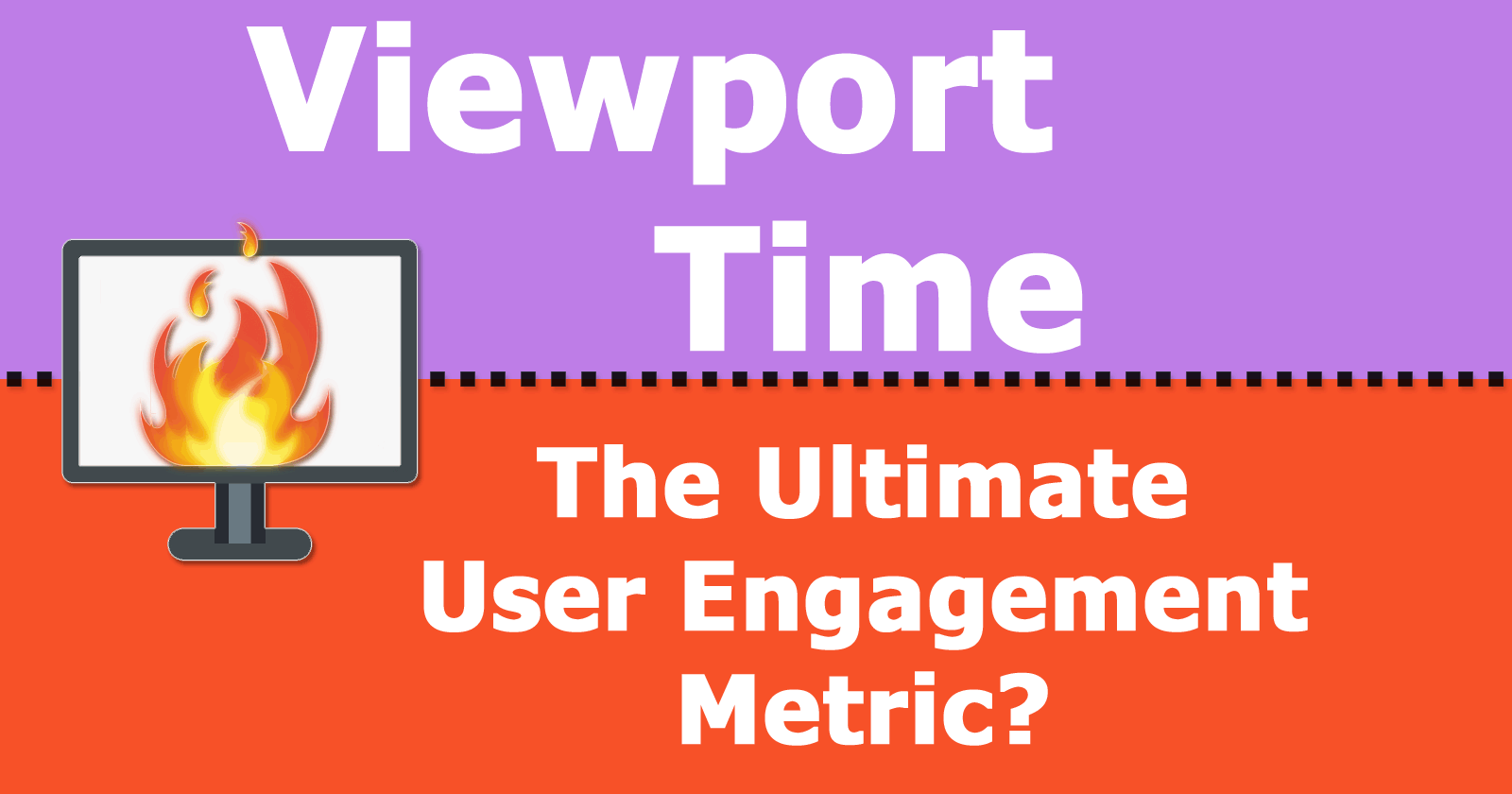Researchers have created a user engagement metric that is more detailed than Dwell Time and other standard measures of user engagement.
The metric is called Viewport Time. It provides information about where site on a page site visitors cluster, how long, and where they bounce out.
The information can be used to create better landing pages, more useful content, increase sales, leads and advertising revenue.
Viewport Time will tell you exactly how much of your content is engaging users and which part is causing visitors to leave. Knowing this allows content producers to improve your content and duplicate those wins across future content.
 Viewport Time could provide more insight than current user engagement metrics.
Viewport Time could provide more insight than current user engagement metrics.Dwell time is a fuzzy metric. It tells you that site visitors were engaged but not why.
Another weak point is that a comparison of pages with similar dwell times can’t tell you what part of those pages were attractive and where on those pages the site visitors left.
How Does Viewport Time Work?
Viewport Time is a measurement of where on a page a browser window is lingering. This information can tell you if a site visitor bailed after the opening paragraph, after reading half the content or if the user made it to the end of the content.
Measuring where the browser window is at can reveal places on a webpage where most users tend to cluster. This data can then be studied to understand why users might leave at a certain point of the page or why they stay.
Taken together, the information can then be used to replicate the successful pages over and over, whether success is measured in sales, leads, ad clicks or ad views.
Viewport Time reveals where users lingered on a page, showing you exactly what parts of your content satisfies users.
Wouldn’t you like to know which pages hold on to your visitors to the end of the article? That’s the kind of information that can help you optimize a content and advertising positioning that will hold on to visitors the longest amount of time. In fact, Yahoo may already use this technology.
Google might also being using a form of Viewport Time to measure user satisfaction. In 2014 they published a research paper titled, Towards Better Measurement of Attention and Satisfaction in Mobile Search that explored using a mobile browser viewport to track user behavior in order to improve user engagement.
Useful information contained in this paper is:
1. Viewport Data Excels at Understanding Mobile Visitors
It confirms that CTR data for measuring user satisfaction with search results don’t work for answer box results, particularly for mobile site visitors. The conclusion is that click based metrics are inappropriate for measuring mobile search user satisfaction, since some results like Answer Box results don’t require clicks to signal satisfaction.
2. Gaze Duration
This is a measurement that can infer how long a browser viewport was focused on a specific section of the search results.
3. Provides Insight into Mobile User Behavior
Discovers that the average viewer’s gaze is focused on the top half of the browser viewport.
4. Viewport Data is Comparable to Click Data
Combined with the insight that most mobile viewers are focused on the top part of their viewport, researchers discovered they can know which set of results was the object of focus.
Does Google Use Viewport Data for Quality Control?
We don’t know for certain that Google is using this kind of measurement for tracking mobile user engagement on Google Search. Given all the benefits of viewport metrics, it kind of makes sense that Google would use it.
If Google does use viewport data, then it challenges the SEO industry’s hypotheses about how search engines track user engagement.
Currently, the SEO industry believes that click data is exclusively used to measure user satisfaction. Viewport Time adds a third dimension to understanding user engagement, a dimension we don’t currently have access to.

Do You Need Viewport Engagement Metrics?
Here is a list of the reasons and benefits for using Viewport Time metrics:
- Mobile site visits are dominant and increasingly important.
- Understanding where on a web page a site visitor is leaving is critical.
- Dwell time doesn’t tell you how far a user got on your web page before abandoning it.
- Bounce rate is incapable of communicating what part of your page loses the most visitor.
- Neither dwell time or bounce rate can tell you what kinds of content engages your visitors.
- Viewport Time tells you which parts of content users skip.
- Explains why article length doesn’t correlate with dwell time.
Does Yahoo Use Viewport Time to Improve User Engagement?
There is a research paper and a blog post by a Yahoo researcher that explains how Viewport Time is a superior metric for understanding what factors help create engaging web pages.
I suggest reading the blog post first as it’s an easy read. Then read the full 10-page PDF if you’re really interested. Below are some of the more interesting points.
Yahoo’s research was conducted on desktop models. Any insights gained are strictly for that model. The research introduces four levels of user engagement:
- Bounce
- Shallow engagement
- Deep engagement
- Complete engagement
1. Bounce Metric
This means that a user leaves after 10 seconds. The ten second mark is not an absolute number. Some content may only need that much time.
2. Shallow Engagement
This means the user reads less than 50% of the content. Like the previous metric, this percentage is arbitrary and can be lowered or increased depending on appropriateness to your content.
3. Deep Engagement
Site visitor reads more than 50% of the content.
4. Complete Engagement
The site user reaches the end of the article and actively engages with it by posting a comment.
On a side note, perhaps one can also add clicking on social media icons or subscribing to a newsletter to the Complete Engagement metric.
Additionally, on an unrelated note, the concept of “complete engagement” is intriguing as a signal of user engagement. There are many good reasons why Google shouldn’t use user generated comments as a ranking signal, but as a non-e-commerce web publisher, you may wish to consider if hosting comments is useful for your users.
If Viewport Time data was available to you, you would be able to model the following for increasing user engagement:
- Plan the best page layout.
- Identify the optimal positions for media elements (images and videos).
- Accurately know the optimal number and placement of advertisements.
- Understand the word count users prefer and achieve the highest level of user engagement.
Who Will Viewport Time Benefit?
Viewport time will help virtually every web publisher, whether they are an affiliate marketer, conversion optimization expert, personal injury lawyer, a news publisher or a B2B/B2C ecommerce store.
Viewport time provides valuable data that any marketer, marketplace or service provider could use to optimize their pages for sales and leads.
Obviously, Viewport Time is a valuable user engagement metric. But there is currently no app or service that comes close to providing this kind of metric. This is an article about a real analytics metric that no service currently provides. And we have to ask the question… why not?
Image Credits
Images via Shutterstock, modified by author





![AI Overviews: We Reverse-Engineered Them So You Don't Have To [+ What You Need To Do Next]](https://www.searchenginejournal.com/wp-content/uploads/2025/04/sidebar1x-455.png)